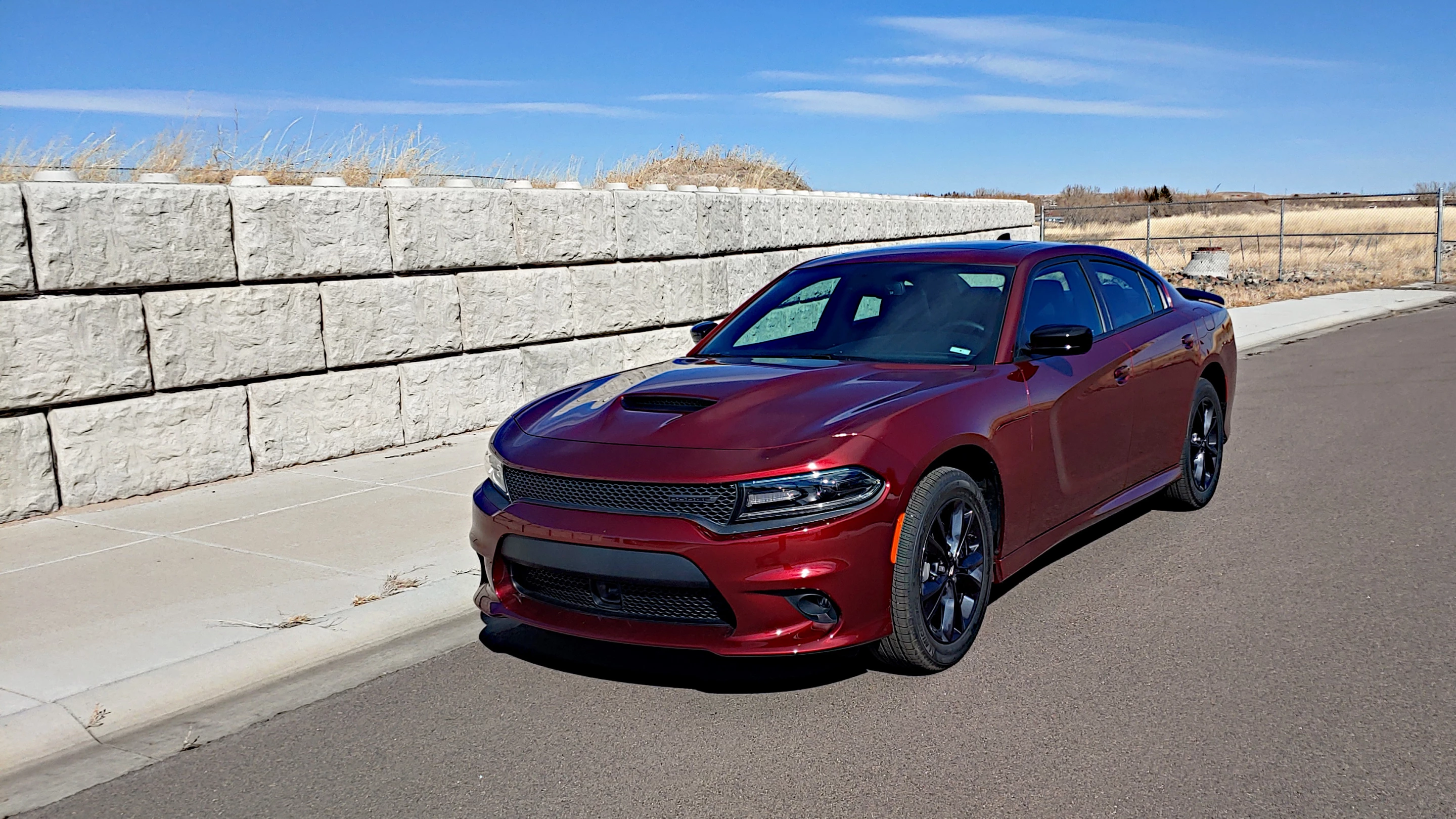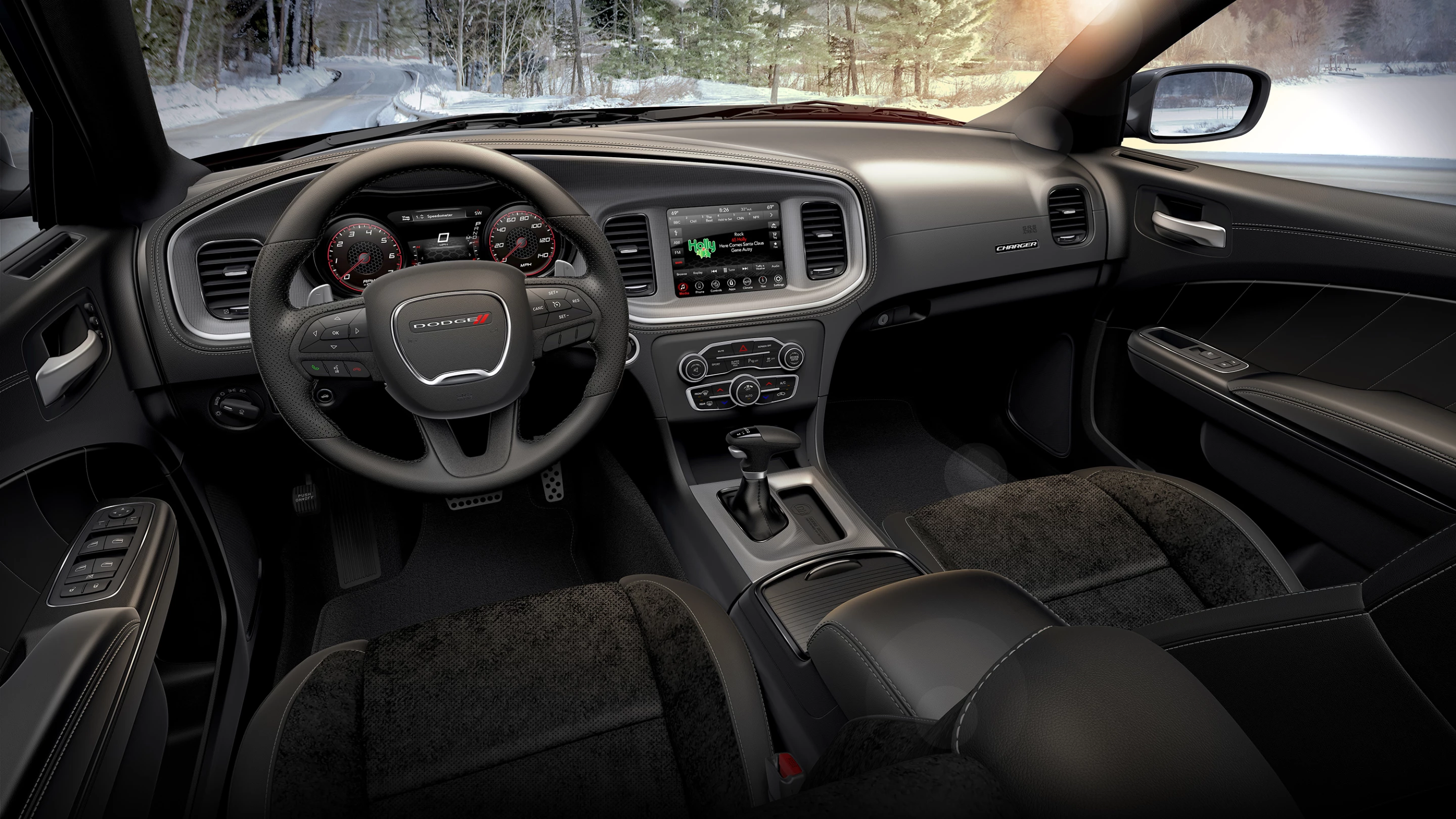By most accounts, the era of big sedans from Detroit is coming to an end. Dodge didn’t get that memo, however, and has continued pouring excellence into the big Charger. This year, the GT model gets all-wheel drive and an 8-horsepower performance boost to go with that.
At a glance
- Dodge adds AWD to the Charger GT this year
- Not a "muscle car" per se, but still a good goer
- Good on the road and in bad weather situations
- One of the last of the big, roomy, American-sized sedans from Detroit
The Charger GT AWD is not quite a gimpy slouch and not quite a muscle sedan. Instead, it’s something in between those things, with good performance that doesn’t get into "great" territory. It has a 3.6-liter V6 that outputs 300 horsepower (224 kW) in the long curve that a good six should have. This power goes to an eight-speed automatic with a differential that operates in a rear-wheel bias, offering AWD as a control and performance option rather than as an "always on" option.
Like the Challenger GT that the Charger GT is based upon, the driver can control whether the AWD, traction control, and most of the stability controls are operating. For true performance driving, it’s possible to press down on the traction control button until the car beeps (about three seconds at a complete stop) and have everything shut down. So long as the driver keeps the transmission in Drive, those systems take a back seat and let the good times roll.
Most of the time, of course, that’s not going to be the norm. Under regular driving conditions, the Charger GT offers hefty amounts of muscle when needed, but won’t overdo it with traction-breaking horsepower and torque. Our testing gave the Charger GT a 0-60 mph (92 km/h) time of about five seconds on average (starting flat-footed). That’s nothing to scoff at. What’s more, the big sedan actually handles quite well at speed.

The tradeoff for the extra performance is fuel economy. The 2020 Charger GT AWD is EPA rated at 18 mpg in the city and 27 mpg on the highway (13.1 and 8.7 l/100km). In the real world, though, our testing returned only 15 mpg (15.7 l/100km) in the city and 24 mpg (9.8 l/100km) on the highway. Some of that can be attributed to the higher altitude of Wyoming and the snow tires that were equipped on the car, but getting the rated MPG would still be difficult for many people.
Some good news comes with the Charger’s interior. The over-large and very blue-collar-posh Dodge interior remains in the Charger GT. Hidden in that upscale (but not luxurious) interior are gems such as the excellent sport bucket seating, the best-in-the-business infotainment that Fiat-Chrysler is known for, and the biggest back seat and trunk to be found in the non-premium full-sized sedan segment.
On the road, the 2020 Charger is a solid sedan with a good feel. It’s not as cornering-centric as most European options, but it’s definitely muscular. And it’s surprisingly maneuverable for its size. In the GT edition, the AWD really aids balance in the turns and gives the big Charger a road feel that lives up to the Gran Turismo connotations of its name. This is a good cruising sedan.
When things get rough (even when that’s on purpose), the Charger GT continues to deliver. On the snow and ice of Colorado, in controlled conditions, we saw how much fun a big car like this can be to throw around ... and how amazingly stable it can be, once an understanding is gained of the physics involved. In less controlled, but more everyday conditions, the vehicle continued to show excellence in inclement weather during a week in Wyoming.

The Charger comes standard with a lot of good equipment, and the GT upgrades with a larger touchscreen (8.4 inches), a more performance-oriented suspension, bigger wheels, and those excellent sport seats in the front. That’s at about US$36,500 to get started. We had a few add-ons like heated and ventilated front seats and the well-done Harman Kardon sound system, plus the Technology Group package, which adds advanced safety and driver aids. All of that bumped the price tag closer to $39,000 with delivery.
Chrysler and Dodge have done well with the shared platform upon which the Charger, Challenger, and Chrysler 300 are all based. The AWD system is well-suited to these cars and their bulk. It does particularly well in the Charger GT, which has suspension and exterior upgrades that bolster its credibility.
Product Page: 2020 Dodge Charger










